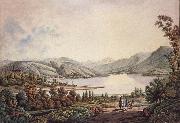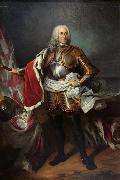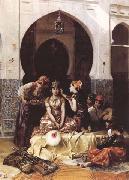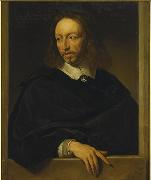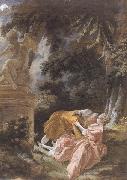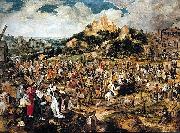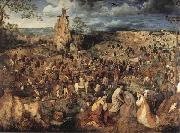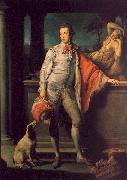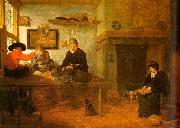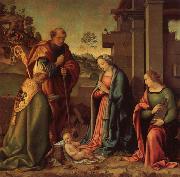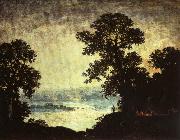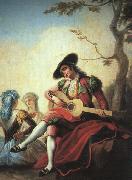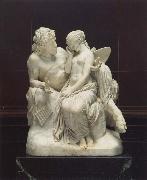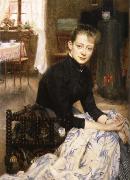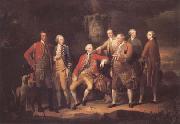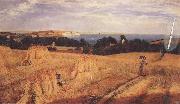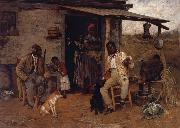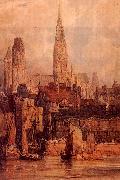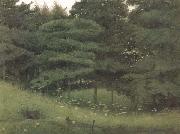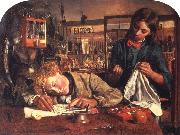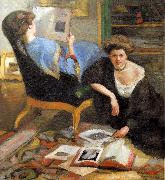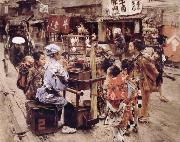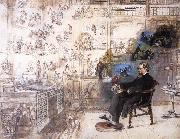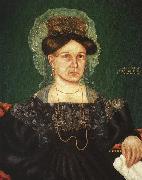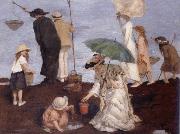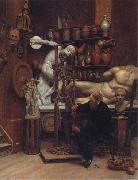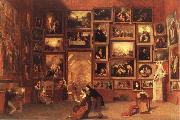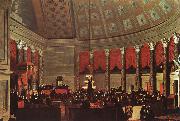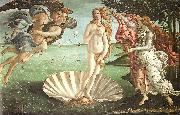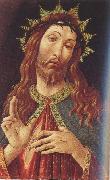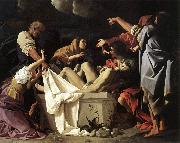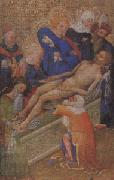|
|
|
|
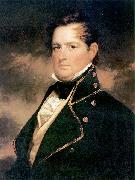 |
Peter Buell Porter
|
|
(August 14, 1773 - March 20, 1844) was an American lawyer, soldier and politician who served as United States Secretary of War from 1828 to 1829.
He graduated from Yale College in 1791, studied law in Litchfield, Connecticut, was admitted to the bar, and commenced practice in Canandaigua, New York in 1793. He served as clerk of Ontario County from 1797 to 1804 and was a member of the New York State Assembly in 1802 and again in 1828.
In the fall of 1809, Porter moved to Black Rock, New York and was elected as a Democratic-Republican to the Eleventh and Twelfth United States Congresses, serving from March 4, 1809 to March 3, 1813, but declined renomination. During his service in Congress, he was a leading figure among Congressional "war hawks" and Chairman of the Committee that recommended preparation for war with Great Britain. At the same time, from 1810 to 1816, he was a member of the Erie Canal Commission, a commission on inland navigation established in 1810 by the New York state Legislature to survey a canal route from the Hudson River to the Great Lakes.
During the War of 1812, Porter was initially quartermaster general of the New York State Militia from May to October 1812. He participated in and criticized General Alexander Smyth's abortive operations against British Canada in 1812, culminating in a bloodless duel between the two. The historian John R. Elting wrote of the duel, stating "Unfortunately, both missed."[1] He later raised and commanded a brigade of New York militia that incorporated a Six Nations Indian contingent and led his command with distinction. For his actions, he was presented a gold medal under joint resolution of Congress dated November 3, 1814 "for gallantry and good conduct" during the Battle of Chippewa, the Battle of Niagara, and the Battle of Erie.
Porter was Secretary of State of New York from February 1815 to February 1816. He was also elected to the Fourteenth United States Congress. Although his term in Congress began on March 4, 1815, the actual Session began only in December, and he took his seat on December 11, 1815. On January 23, 1816, he resigned, having been appointed a Commissioner under the Treaty of Ghent, which caused a controversy as to the constitutionality of sitting in Congress and holding this commissionership at the same time.
In 1817, his political friends of Tammany Hall printed ballots with his name and distributed them among their followers to vote for Porter for Governor of New York at the special election which was held after the resignation of Governor Daniel D. Tompkins. DeWitt Clinton, the otherwise unopposed candidate, was fiercely hated by the Tammany organization, and Porter received about 1,300 votes although he was not really running for the office. Porter became a regent of the University of the State of New York in 1824, and served in that capacity until 1830.
From May 16, 1828 to March 9, 1829, Porter served as Secretary of War in the Cabinet of President John Quincy Adams, and was an advocate for the removal of Eastern Indians beyond the Mississippi. He moved to Niagara Falls in 1836 and was a presidential elector on the Whig ticket in 1840. He died at Niagara Falls in 1844, and was interred in Oakwood Cemetery. Fort Porter and Porter Avenue at Buffalo were named in his honor. |
|
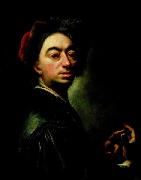 |
Peter Johannes Brandl
|
|
Petr Brandl (Peter Johannes Brandl or Jan Petr Brandl) (October 24, 1668 - September 24, 1735) was a painter of the late Baroque, famous in his time but - due to isolation behind the Iron Curtain - rather forgotten until recently. He was of German-speaking Austrian descent in the bilingual kingdom of Bohemia. His mother was from Czech peasant family, that lived in Přestanice (a village in Bohemia, now part of Hlavnovice). According to the Grove Dictionary of Art and other sources, Brandl was born into a craftsmanes family (his father seems to have been a goldsmith) and apprenticed around 1683 - 1688 to Kristien Schröder (1655 - 1702).
Brandl employed strong chiaroscuro, areas of heavy impasto and very plastic as well as dramatic figures. The major art museum in Prague, called the National Gallery, has an entire hall devoted to the artist's works, including the wonderful "Bust of an Apostle" from some time before 1725. |
|
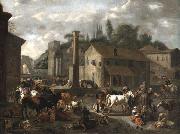 |
Peter van Bloemen
|
|
Pieter van Bloemen, called Standaart (bapt. 17 January 1657 - 6 March 1720), first name also spelled Peter or Peeter, was a Flemish painter.
Van Bloemen was born in Antwerp, where he attained the status of master at the age of 17. He then went to Rome, where he remained until 1694, adopting completely Italian manners. In 1699 he became dean of the Guild of Saint Luke in Antwerp. He was the teacher of his younger brother Jan Frans van Bloemen, a highly regarded painter of classical landscapes. The brothers travelled widely together, often collaborating on works, with Pieter taking on the role of figurista in Jan Frans' vedute, a role he also performed for many other artists. |
|
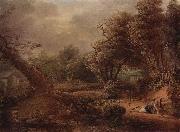 |
Philipp Hieronymus Brinckmann
|
|
(or Brinkman,) a German painter and engraver, was born at Spires in 1709. He was a pupil of J. G. Dathan. His favourite subjects were landscapes, but he also painted historical subjects and portraits; in some of the latter he imitated the force and colouring of Rembrandt. He was painter to the Court, and keeper of the Gallery at Mannheim, where he died in 1761. In the Städel at Frankfort is a 'Swiss Landscape' signed P. H. Brinckmann fecit, 1745. He etched some plates in a picturesque and spirited style. |
|
|
|
|
|
|
|
|
|
|
|
|
|
 |
Pieter Boel
|
|
(1626-1674) was a Flemish Baroque painter who specialised in lavish still lifes.
Boel was born in Antwerp. He probably went to Italy in 1650. In 1668, he worked for Charles Le Brun (1619-1690) in his first tapestry making studio. According to Arnold Houbraken, whose source was his picture in Cornelis de Bie's book Het Gulden Cabinet, he specialized in painting animals. He died in Paris. |
|
|
|
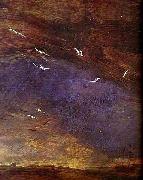 |
Pieter Bruegel the Elder
|
|
(Dutch pronunciation:c. 1525 - 9 September 1569) was a Flemish Renaissance painter and printmaker known for his landscapes and peasant scenes (Genre Painting). He is sometimes referred to as "Peasant Bruegel" to distinguish him from other members of the Brueghel dynasty, but is also the one generally meant when the context does not make clear which "Bruegel" is being referred to. From 1559 he dropped the 'h' from his name and started signing his paintings as Bruegel.
There are records that he was born in Breda, Netherlands, but it is uncertain whether the Dutch town of Breda or the Belgian town of Bree, called Breda in Latin, is meant. He was an apprentice of Pieter Coecke van Aelst, whose daughter Mayken he later married. He spent some time in France and Italy, and then went to Antwerp, where in 1551 he was accepted as a master in the painter's guild. He traveled to Italy soon after, and then returned to Antwerp before settling in Brussels permanently 10 years later. He received the nickname 'Peasant Bruegel' or 'Bruegel the Peasant' for his alleged practice of dressing up like a peasant in order to mingle at weddings and other celebrations, thereby gaining inspiration and authentic details for his genre paintings. He died in Brussels on 9 September 1569 and was buried in the Kapellekerk. He was the father of Pieter Brueghel the Younger and Jan Brueghel the Elder. Both became painters, but as they were very young children when their father died, it is believed neither received any training from him. |
|
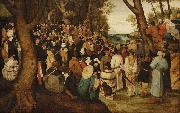 |
Pieter Brueghel the Younger
|
|
(1564 or 1565 - 10 October 1636) was a Flemish painter, known for numerous copies after his father Pieter Brueghel the Elder's paintings and nicknamed "Hell Brueghel" for his fantastic treatments of fire and grotesque imagery.
Pieter Brueghel the Younger was the oldest son of the famous sixteenth-century Netherlandish painter Pieter Brueghel the Elder (known as "Peasant Brueghel") and Mayken Coecke van Aelst. His father died in 1569, when Pieter the younger was only five years old. Then, following the death of his mother in 1578, Pieter, along with his brother Jan Brueghel the Elder ("Velvet Brueghel") and sister Marie, went to live with their grandmother Mayken Verhulst (widow of Pieter Coecke van Aelst). She was an artist in her own right, and according to Carel van Mander, possibly the first teacher of the two sons. The family moved to Antwerp sometime after 1578 and Pieter possibly entered the studio of the landscape painter Gillis van Coninxloo (1544 - 1607). In the 1584/1585 registers of Guild of Saint Luke, "Peeter Brugel" is listed as an independent master. On 5 November 1588 he married Elisabeth Goddelet, and the couple had seven children.
He painted landscapes, religious subjects and fantasy paintings. For this last category he often made use of fire and grotesque figures, leading to his nickname "Hell Brueghel".
Apart from these paintings of his own invention, Pieter Brueghel the Younger also copied the works his father had created by using a technique called pouncing. His genre paintings of peasants lack Pieter the Elder's subtlety and humanism, and emphasize the picturesque
|
|
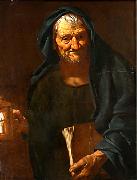 |
Pietro Bellotti
|
|
(1625-1700) was an Italian painter active in the Baroque period. He was born in Sale. He was a pupil of Michele Ferrabosco in Venice. He was patronized by Pope Alexander VIII and by the Duke of Uceda. He lived in Bolzano[1]. He painted mostly portraits. He died at Venice.
|
|
|
|
|
|
|
|
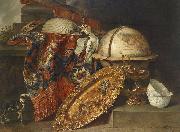 |
R. v. Bohnlich
|
|
R v Bohnlich (fl.c.1880)
19th Century Paintings and Watercolours
|
|
|
|
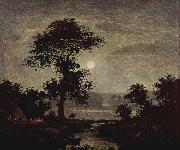 |
Ralph Albert Blakelock
|
|
(October 15, 1847 - August 9, 1919) was a romanticist painter from the United States.
Ralph Blakelock was born in New York City on October 15, 1847. In 1864, Blakelock entered the Free Academy of the City of New York (now known as the City College) with aspirations of becoming a physician. After his third term he opted to dismiss his formal education and left college. From 1869-71 he traveled west, extensively wandering far from known civilization and spending time among the American Indians. Largely self-taught as an artist, he began producing competent landscapes, depicting select views from his travels, as well as scenes of American Indian life. His works were exhibited in the National Academy of Design.
Moonlight, 1885, the Brooklyn MuseumIn 1877 Blakelock married Cora Rebecca Bailey; they had nine children. In art, Blakelock was a genius, yet, in business dealings and in monetary transactions he proved a failure. He found it difficult, if not crushing to maintain and support his wife and children. In desperation he found himself selling his paintings for extremely low prices, far beneath their known worth. In hopes of lifting his family from abject poverty, reportedly on the day his 9th child was born, Blakelock had offered a painting to a collector for $1000. The collector made a counter offer and after refusing the proposed sum Blakelock found himself in a bitter argument with his wife. After the domestic dispute, Blakelock returned to the patron and sold the painting for a much lesser sum. Defeated and frustrated, it is said he broke down and tore the cash into pieces. And so it was after such repeated failed business transactions that he began to suffer from extreme depression and eventually show symptoms of mental frailty. In 1899 he suffered a breakdown. |
|
|
|
|
|
|
|
|
|
|
|
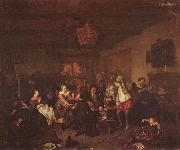 |
Richard Brakenburgh
|
|
(1650, Haarlem - 1702, Haarlem), was a Dutch Golden Age painter.
According to Houbraken he was a light-hearted poet from Haarlem. He was the pupil of Hendrik Mommers who went on to paint clever genre scenes in the manner of Adriaen van Ostade. Though some said he was the pupil of Bernard Schendel, they were the same age and painted in similar styles. He was successful enough at his art that his Frisian widow was able to purchase an annuity after his death in Friesland.
According to the RKD he is registered in Leeuwarden during the years 1670-1687.He is known for both Italianate landscapes and portraits. He painted similar subjects to those of Schendel, representing merry-makings and drunken assemblies. His pictures are ingeniously composed, and well coloured, something in the manner of Adriaan van Ostade, though greatly inferior. They are painted with facility, although they have the appearance of being very highly finished; and he perfectly understood the management of chiaroscuro. His greatest defect is his incorrect drawing of the figure, which he appears not to have studied from nature. The Vienna Gallery has two 'Peasant Scenes' by him, said to have been painted in 1690; the Berlin Museum one, and the Amsterdam Gallery one. In the Brussels Gallery is a 'Children's Feast,' signed and dated 1698; and the Rotterdam Museum has a 'Doctor's Visit,' signed and dated 1696. In Windsor Castle are two good 'Artists' Studios ' by him. He also sometimes practised the art of engraving.
He was the teacher of Wigerus Vitringa, Abraham Pardanus, and Gillis de Winter. He was followed by Jan Steen and Bernardus van Schijndel. He died at Haarlem in December 1702 and was buried in January 1703.
|
|
|
|
|
|
|
|
|
|
|
|
|
|
|
|
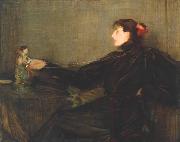 |
Robert Brough
|
|
(1872 - 21 January 1905) was a Scottish painter born in Invergordon, Ross and Cromarty.
He was educated in Aberdeen, and, whilst apprenticed for over six years as lithographer to Messrs Gibb & Co., attended the night classes at Gray's School of Art. He then entered the Royal Scottish Academy, and in the first year took the Stuart prize for figure painting, the Chalmers painting bursary, and the Maclame-Walters medal for composition.
After two years in Paris under J. P. Laurens and Benjamin-Constant at Julian's atelier, he settled in Aberdeen in 1894 as a portrait painter and political cartoonist. A portrait of Mr. W. D. Ross first drew attention to his talent in 1896, and in the following year he scored a marked success at the Royal Academy with his Fantaisie en Folie, which he bequeathed to the National Gallery of British Art (now the Tate gallery). Two of his paintings, Twixt Sun and Moon and Childhood of St. Anne of Brittany, were at the Venice municipal gallery. Brough's art was influenced by Henry Raeburn and by modern French training, but it strikes a very personal note.
Brough died from injuries received in a railway disaster in 1905.
|
|
|
|
|
|
|
|
|
|
|
|
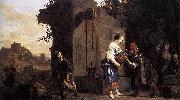 |
Salomon de Bray
|
|
(Amsterdam, 1597 - Haarlem, 11 May 1664) was a Dutch Golden Age architect and painter.
De Bray established himself in Haarlem before 1617, where he is registered as being a member of the schutterij that year in the St. Adrian's cloveniers.He probably followed draftsmanship and painting lessons in the small academy started by Karel van Mander, Hendrick Goltzius and Cornelis van Haarlem, and where he married in 1625. He is registered as a pupil of Goltzius and Cornelis van Haarlem, but he probably started his training in Amsterdam with Jan Pynas, Nicolaes Moeyaert and Pieter Lastman.He painted history paintings, portraits and landscapes. As a Catholic he probably also made altar pieces for the Haarlem underground Catholic churches known as mission stations, or staties. He was a member of the Chamber of rhetoric called "De Wijngaertranken". This is probably how he met his wife Anna, the sister of the painter Jan and the poet Jacob Westerbaen. They married in 1625 and in 1630 he became a member of the Haarlem Guild of St. Luke. He cooperated with fellow Haarlem lukasguild member Jacob van Campen in the decoration of Huis ten Bosch in The Hague. His works draw on the spirit of the Dutch classicism beginning at that time, and are comparable with those of Pieter de Grebber.
Transcription of Salomon de Bray's proposed hierarchy of the guild in 1631. The Haarlem archivist C.J. Gonnet published a book in 1877 on the Haarlem St. Lukasgilde archives. This was meant for historians wishing to do research on Haarlem painting, but who could not read the old handwriting.De Bray was also active as a designer of silverwork, as a poet, as an architect and as a town planner for the city council of Haarlem. He designed an ambitious plan to expand the city on the North side that was partially implemented in the decades after his death. He became headman of the Guild of St. Luke and even prepared a new charter for the guild (that was never ratified) in 1631. As an architect, he was involved in the construction or expansion of Haarlem's City Hall, Zijlpoort, and St. Annakerk (Church of St. Anne), and Nijmegen's city orphanage. One of his poems was set to music by his friend the composer Cornelis Padbrue.
Salomon de Bray was the father of ten children, of whom three (Dirck de Bray, Jan de Bray, and Joseph de Bray) became notable artists. He probably died of the plague that hit Haarlem in 1664, as he and his children Jacob, Josef, Juliana and Margaretha all died in April and May of that year. His wife had already died the previous year. He was buried in the Sint-Bavokerk in Haarlem.
In 1631 Salomon de Bray wrote "Architectura Moderna" which provided a biography and descriptions of buildings built by Hendrick de Keyser, one of the key Dutch architects of the period
|
|
|
|
|
|
|
|
|
|
|
|
|
|
|
|
|
|
|







